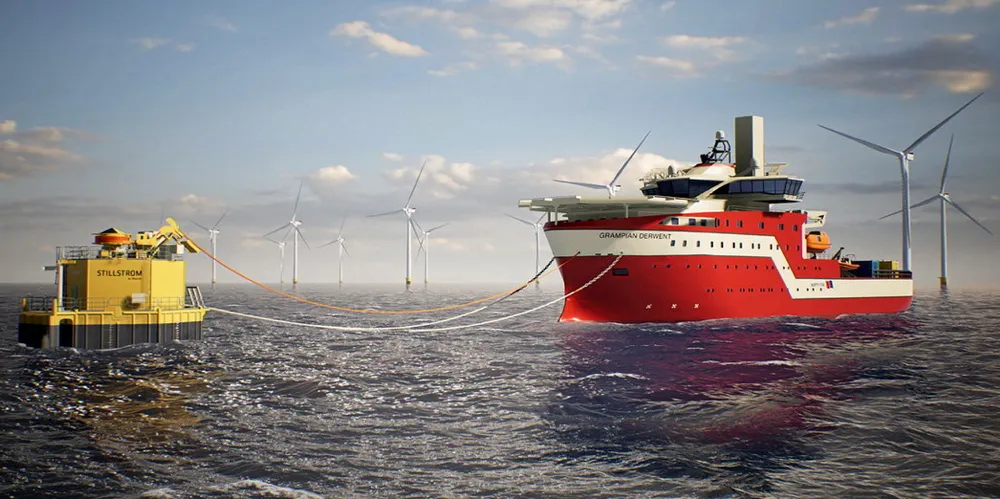BP studies electric vessel charging points for giant offshore wind farms
Advanced offshore charging technologies are being assessed with a view to deployment in the Irish Sea

Oil giant BP and partner EnBW have commissioned a feasibility study on the use of offshore charging technology with battery-powered service operation vessels (SOVs) and crew transfer vessels (CTVs) on the Morgan and Mona wind farms offshore the UK.
The study — which will assess how offshore charging technology can enable a fully electrified and decarbonised offshore vessel operation throughout the operational lifetime of a wind farm — is being carried out by Stillstrom, a specialist subsidiary of shipping giant Moller Maersk.
Tackling emissions from offshore vessels in both the installation and maintenance and operations (O&M) phases of offshore wind farms is seen as a key challenge for the industry.
While decarbonising the installation phase is seen as more challenging, due to the larger vessels involved, several companies have been developing systems where fully electric SOVs can be charged directly from offshore wind turbines for an all-electric operation in the O&M phase.
The study that was commissioned by EnBW and BP focuses on offshore charging solutions that can be connected and integrated with the wind farms’ own offshore substations, either via "hang-off" solutions or from offshore charging buoys, according to a statement by Stillstrom.
"The primary objective of the study is to evaluate the operational, technical, and financial feasibility of incorporating offshore charging capabilities for SOVs and CTVs within the two wind farms," the statement read.
The findings of this feasibility study are expected to play a key role in further decisions to integrate offshore charging into the Morgan and Mona wind farms and align with wind farm installation campaigns.
This is likely to mean a subsequent front-end engineering and design (FEED) study ahead of a final investment decision before actual installation of offshore charging solutions in the Morgan and Mona wind farms, Stillstrom stated.
“We are excited to be collaborating with Stillstrom to assess the feasibility of integrated offshore charging solutions for our Morgan and Mona wind farms," stated Richard Haydock, BP's programme director for UK offshore wind.
"Innovative charging solutions can play an important role in both the electrification and decarbonisation of offshore wind farm vessel operation. We look forward to seeing how these innovative solutions could help our projects deliver secure, low carbon energy to the UK and support the UK’s ambition to be net zero by 2050.”
The Morgan and Mona offshore wind farms, located in the Irish Sea, have a combined potential generating capacity as high as 3GW.
Kristian Borum Jorgensen, the CEO of Stillstrom, added: “We believe that our collaboration will set new standards for environmentally conscious practices in offshore wind operations, contributing to a cleaner and more sustainable future.”
In August, Stillstrom announced the signing of an MoU with SOV operator North Star to jointly accelerate the adoption of offshore charging and vessel electrification technologies in the UK offshore wind sector.
The pair said the solutions will enable the vessels to recharge their battery systems using wind energy while in the field.
(Copyright)